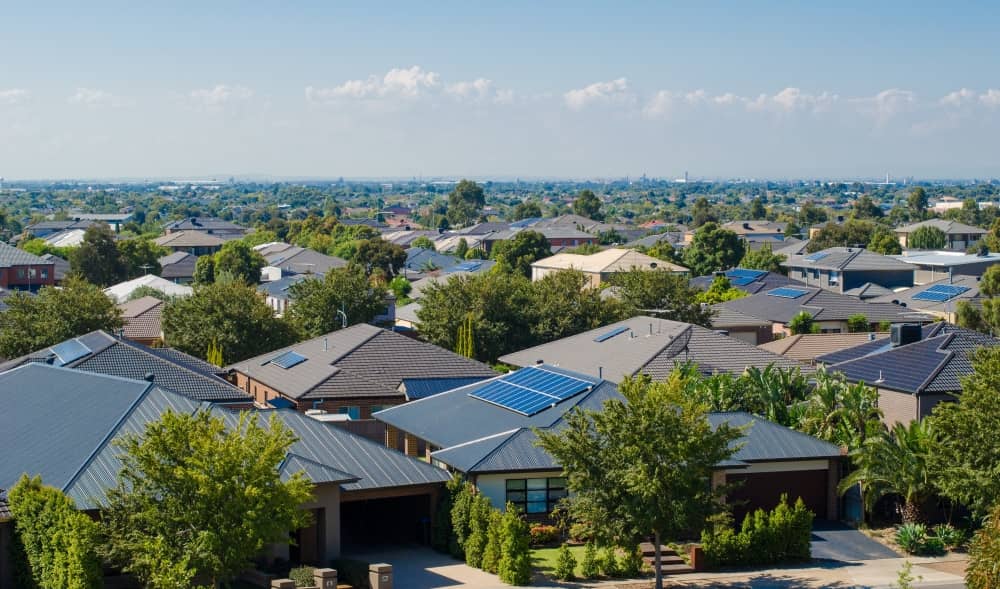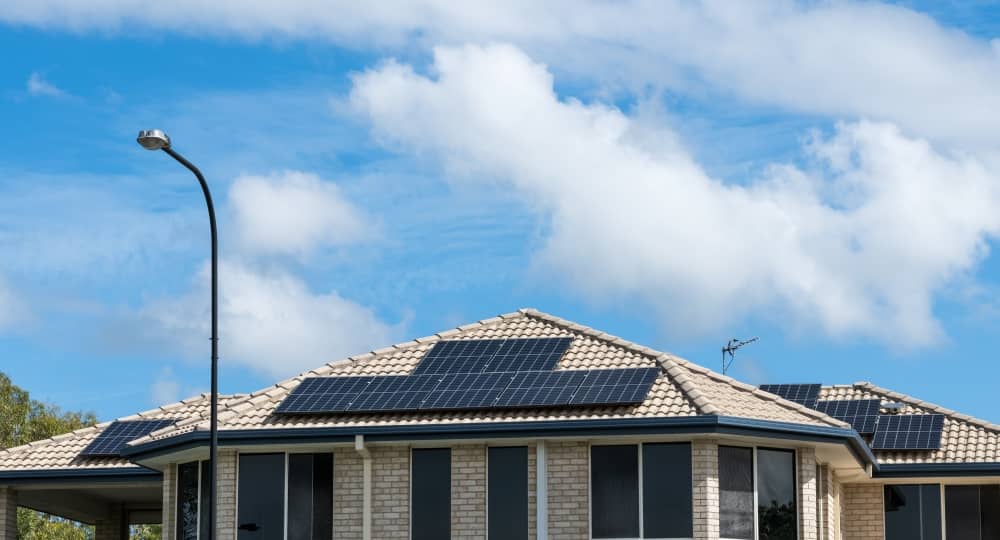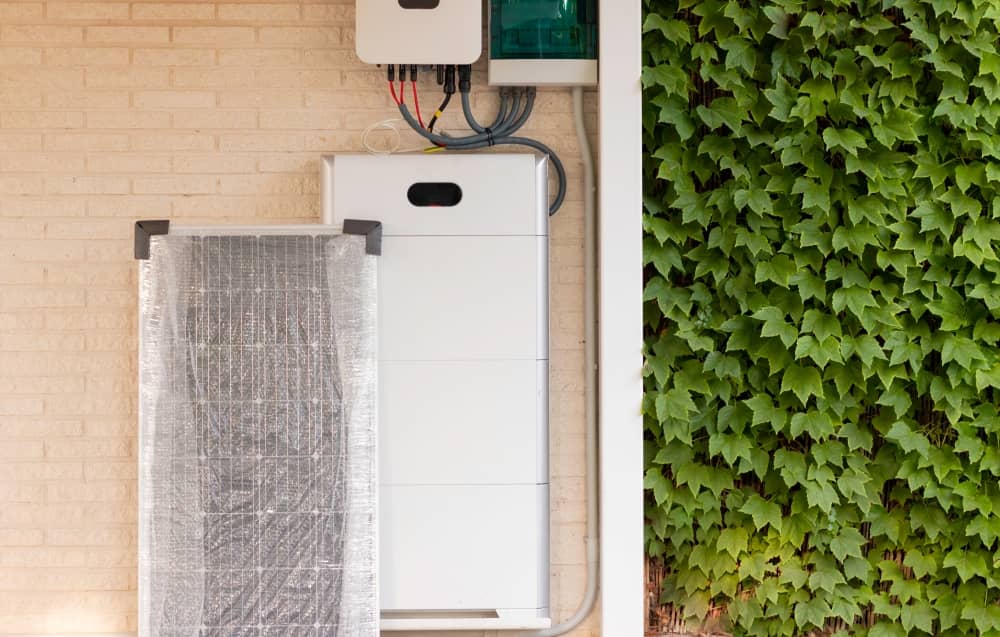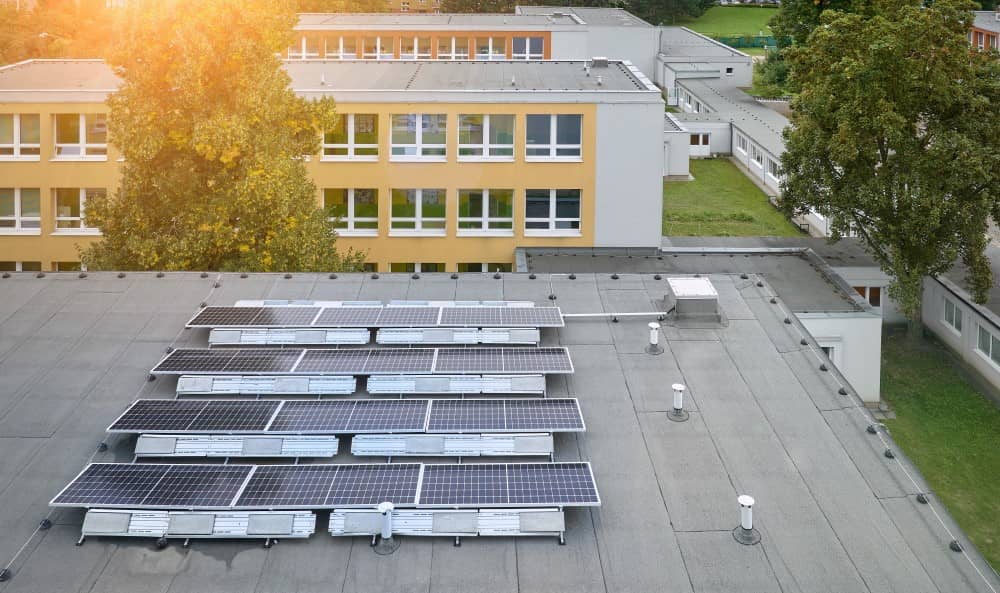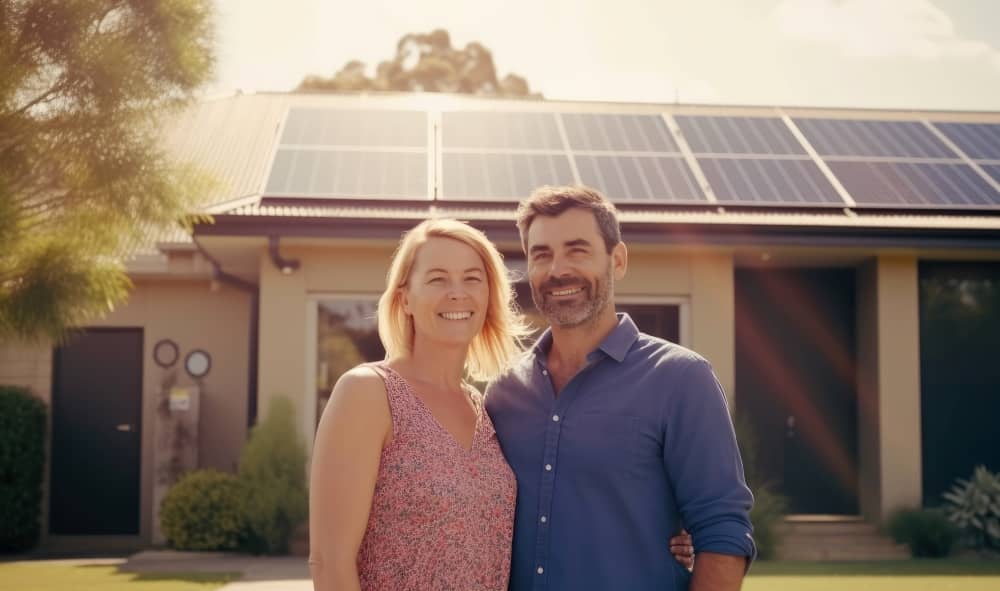Whether you’re planning to go solar or already have it, buying a battery is one thing you need to decide on. A solar battery can increase your solar system’s efficiency and versatility. However, running your solar system is neither essential nor a requirement. The purpose of solar batteries is to store excess energy from your solar panel so that you can use that energy during rainy or gloomy days or at night-time.
In this guide, we’ll help you learn more about solar batteries to help you decide whether you should add them to your solar system.
How Do Solar Batteries Work?
Let’s be honest. Solar would be inefficient if the energy produced had nowhere to go. You cannot use solar at night or when the sun is not shining. Therefore, the unused power will go to waste. This is where solar batteries become useful as they function as storage for the energy generated by the solar panels. That means you can use the stored energy for later, whether it’s cloudy or after the sun sets.
But how exactly does a solar battery work? This electrochemical device has different parts, but the most important ones are the anode (negative) and cathode (positive). Between these two are the electrolyte and separator. The anode has negatively charged electrons, which seek out their opposites found in the cathode. The electrolyte and separator block the electrons so they do not go straight to the battery. Instead, they flow through the wire that connects the anode and cathode. This flow of electrons is what we use as electricity.
What Are the Benefits of a Solar Battery?
There are several benefits you can get when you add a solar battery to your solar setup, including the following:
- If you store enough energy, you can use your solar even after sundown and through the night.
- A solar battery lets you import less energy from the grid, which helps you pay less to the electricity retailer.
- Time of Use (ToU) tariffs may soon become mandatory, allowing you to deduct high per-kWh costs during peak electricity usage. According to Synergy, the high demand for electricity in WA is during the late afternoon and evening, specifically from 3 PM to 9 PM. Without a battery, ToU tariffs can increase your electricity bills significantly.
- Certain batteries offer backing up of important circuits you may have in your home. If your battery storage has this feature, you do not have to worry about blackouts.
- Many people may not be aware that they can be a part of a virtual group comprising other battery owners. This network lets you use your combined capacity so you can support the grid whenever needed. Plus, you get paid for your help.
Instead of feeding energy back to the grid, solar batteries work as an alternative so you can give your home some form of immunity from power outages. The bigger the battery capacity, the more energy you can store. That means you can even use it to help take your home off the grid entirely.
Types of Solar Battery
When shopping for a solar battery, you will find a variety of available batteries. Here are four of the most popular ones:
- Lead-Acid Solar BatteriesLead acid is probably the most common battery type. It has been in use in the industrial and automotive industries for decades. It is cost-effective and proven reliable, which is why it is often the top option when it comes to home solar setups. However, lead-acid batteries can only hold a small amount of energy compared to their weight. The low energy density may be something that you should take a look at before selecting this battery type.
You can find flooded and sealed lead-acid batteries, which can either be a deep or shallow cycle. Such a classification is based on the battery’s intended function and safe discharge depth.
Several years back, many users complained about the lifespan of lead-acid batteries. Thankfully, advancements in technology have improved their number of valuable years, which is why lead-acid remains a viable option for homeowners using solar.
- Lithium-Ion Solar BatteriesCompared to other battery types, lithium-ion has a much newer technology. And unlike lead acid, it has a high energy density without being large and heavy. It is also a more efficient option as lithium-ion allows you to access more energy. You probably recognise this name because it is the same battery used in laptops and smartphones.
Unfortunately, lithium-ion solar batteries are pretty expensive. Additionally, they are likely to catch fire if improperly installed due to the so-called thermal runaway effect.
- Nickel-Cadmium Solar BatteriesUnlike the previous two solar batteries above, nickel-cadmium is rarely used in residential solar. This battery type is often found in airline and industrial applications mainly because it can withstand extreme temperatures. When used as part of a solar setup, you can count on its durability even without a lot of maintenance.
Remember, however, that cadmium is toxic and can harm the environment if disposed of incorrectly. You may need the help of a professional not only when installing but also uninstalling and disposing of the battery.
- Flow Solar BatteriesThis type of solar battery depends on chemical reactions. Electrolytes that contain liquid will then flow between the anode and cathode chambers of the battery to reproduce energy. In reality, flow batteries are quite efficient, thanks to the 100% depth of discharge, which is why they are a great alternative to the more popular lithium-ion and lead-acid batteries.
However, the tanks containing the electrolyte liquid must be sufficient to sustain a large amount of energy for you to take advantage of its efficiency. A humongous tank is not cost-effective for most households, making flow batteries an impractical option for residential solar. You can benefit more if you use this battery type in larger spaces.
How Much Does a Home Solar Battery Cost?
Just like with every product, the cost of a solar battery depends on the brand, its capacity, and its quality. Generally, you can get an idea of the amount you have to pay based on the size. The higher the capacity, the more expensive it is. Here is a rough guide:
- 5kWh starts at $7000
- 10kWh begins at $11,000
- 15kWh starts at $15,000
The prices above are just estimates and do not include the installation costs. If you wish to save on the battery cost, you may want to buy a battery pack only. This pack contains the cells and battery management system. The expensive ones typically come with an inbuilt inverter and other mechanisms. Therefore, if you get a quote, be sure to enquire if it includes an inverter and added electrical components.
To save on the solar battery price, you may want to look into buying a battery that’s included in a solar system package. It’s more affordable than purchasing a new battery to retrofit it to your existing system, particularly if it is older.
How To Find the Right Size Solar Battery?
Although expensive, the right battery size can make your investment worthwhile. This is especially true if you wish to cover your electricity bill completely. You will need to shell out a lot of money to purchase a bigger energy storage system to eliminate your electricity consumption. But what is the right size? The answer will depend largely on your unique circumstances.
Here is an easy way to determine the suitable size of solar battery for your home: base it on your night-time energy use. You can also estimate your energy needs if there is a power outage. Compare that amount to the system and battery capabilities, as well as the specifications you wish to consider.
A typical Australian home utilises approximately 16 to 20 kWh per day. A standard 9-to-5 household generally uses 60% of the kWh mentioned. The recommended size is 10kWh at the minimum to benefit from a solar battery. Apart from that, it would be best to have at least 8kW solar panels for the battery to charge the system reliably. This setup can give you about $700 in savings per year, although you should note that we’re talking about best-case scenarios.
When choosing the battery size, keep in mind the following factors:
- Storage capacity of the battery
- Your energy requirements
- Your night-time usage
- The circuits and appliances you want to power
- The size of your solar system
- The amount of time you wish to power your home with solar
If you’re considering adding or switching to solar, we’re here for you. Our experts can help you decide by giving you an estimate of your future energy savings if you choose solar and use solar batteries. Give us a call today to get a quote. We look forward to assisting you as you start your journey towards achieving energy independence.

